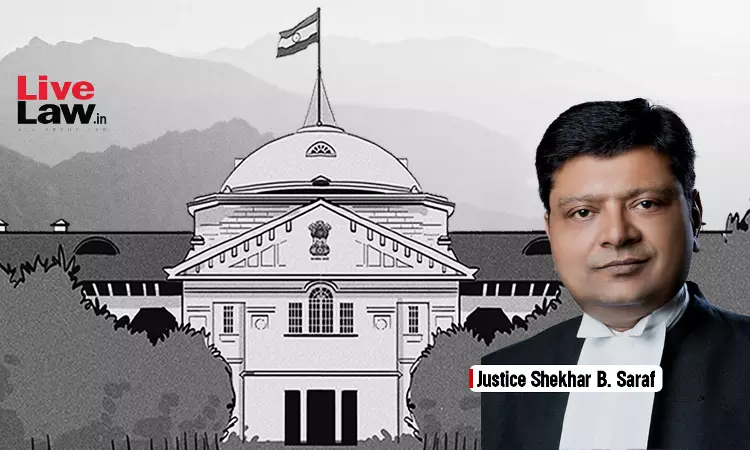- Home
- /
- High Courts
- /
- Allahabad High Court
- /
- UP Stamp (Valuation Of Property)...
UP Stamp (Valuation Of Property) Rules | Burden On Revenue To Prove Nature & Potential Use Of Land Not Discharged Properly, No Spot Verification: Allahabad HC
Upasna Agrawal
11 March 2024 7:42 AM
Placing reliance on its earlier decision in Raj Kumar v. State of U.P. and other, the Allahabad High Court has held that the burden to prove that there was a deficiency in stamp duty at the time of execution of the sale deed is upon the Department.The bench of Justice Shekhar B. Saraf held that in the absence of mandatory spot inspection under Rule 7(3)(c) of the Uttar Pradesh Stamp (Valuation...
Placing reliance on its earlier decision in Raj Kumar v. State of U.P. and other, the Allahabad High Court has held that the burden to prove that there was a deficiency in stamp duty at the time of execution of the sale deed is upon the Department.
The bench of Justice Shekhar B. Saraf held that in the absence of mandatory spot inspection under Rule 7(3)(c) of the Uttar Pradesh Stamp (Valuation of Property) Rules, 1997, the burden was upon the Department to prove that the land was not being used for the purpose stated in the sale deed.
“Such being the case, the burden of proof that rested solely on the Revenue to indicate the nature of the land and the potential use of the land was not discharged properly. Furthermore, the reasoning provided by the authorities below for valuing the land on the basis of non-agricultural cannot be sustained as the same is based on another piece of the land that was much closer to the highway and certain constructions were made on that piece of land.”
Contentions of the Parties
Respondent Authorities sought to impose additional stamp duty on the petitioner terming his land to be non-agricultural in nature.
Counsel for the petitioner contended that since the nature of the land was agricultural at the time of execution of the sale deed, stamp duty was paid accordingly. It was argued that the authorities could not treat it to be non-agricultural merely because the adjacent land which was nearer to the highway was treated as non-agricultural.
It was argued that the authorities had not carried out the mandatory spot verification as per Rule 7(3)(c) of the Uttar Pradesh Stamp (Valuation of Property) Rules, 1997. Since the land was agricultural, no structures were present on the property and no other activity was being carried out from the property.
Per contra, counsel for the respondent argued that even though no spot verification was carried out, the Collector can evaluate the value of a land based on its potential use.
High Court Verdict
The Court relied on the decision of Smt. Pushpa Sareen v. State of U.P. where a Full Bench of the Allahabad High Court had held that the potential use of the land must be assessed with reference to the date of the execution of the sale deed. It was held that potential later use of the land is not a factor to be considered while computing the stamp duty. It has to be calculated based on the use on the date of the sale deed. Even though the Collector has the power to determine the market value of the land at a later date, the same cannot be done without adequate material as to change of use of land.
“Upon a perusal of the judgment in Smt. Pushpa Sareen's case (supra), it is clear that the potential of the land can be assessed on the date of execution of the instrument for determination by the Collector of the true market value. However, this exercise by the Collector has to be based on adequate material and cannot be a matter of hypothesis or surmise. The Collector must have material on record to come to a finding as to the potential use of the land and only thereafter assess the same on such potential use. In the event there is no material present, the Collector cannot base his valuation only on conjectures and surmises.”
Further, the Court relied on the decision of its coordinate bench in Raj Kumar v. State of U.P. and others where it was held that spot inspection must be carried out by the authorities under Rule 7(3)(c) of the Uttar Pradesh Stamp (Valuation of Property) Rules, 1997. It was also held that if the authorities are claiming deficiency in stamp duty paid, the burden is on them to prove the same. It was held that the valuation so calculated by the authorities must have some concrete grounds.
The Court observed that the adjacent plot which was used to hold that the petitioner had paid less stamp duty was not being used as agricultural land at the time of execution of the sale deed. Since petitioner's land was being used for agricultural purposes, the Court held that there was no deficiency in stamp duty.
Accordingly, the writ petition was allowed.
Case Title: M/S Uttaranchal Automobiles Private Limited vs. Chief Controlling Revenue Authority And Others 2024 LiveLaw (AB) 151 [WRIT-C No.12727 OF 2012]
Case Citation: 2024 LiveLaw (AB) 151

